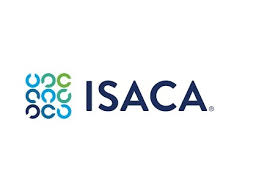Virus Free, Clean Office Space Integral in a New Normal: BreatheEasy CEO Barun Aggarwal

Various studies have shown that the coronavirus spreads faster and more easily in enclosed spaces. According to one study published in the JAMA Internal Medicine, researchers were able to establish a link between the community transmission in China and a source patient because of whom the virus spread on an air-conditioned bus. Barun Aggarwal, CEO, BreatheEasy Consultants Pvt. Ltd. and also a climate reality leader recently spoke to the media about the process which can be implemented for obtaining clean, virus-free air in offices.
 |
Barun Aggarwal, CEO, BreatheEasy Consultants Pvt. Ltd.
With coronavirus cases rising in India again, and offices starting to open up, what needs to be understood is that we shall need protection from this threat even this year and should not let our guard down in any way. Over 16,000 new cases were reported on February 27, while there were 113 deaths. Considering this, indoor public spaces such as restaurants, shopping malls, offices, and markets all over the country must take adequate measures to ensure that people entering their premises do not contract the virus.
Virus spread in office spaces
“COVID-19 is thought to be primarily transmitted via large respiratory droplets; however, an increasing number of outbreak reports indicate the role of aerosols in COVID-19 outbreaks. Aerosols consist of small droplets and droplet nuclei which remain in the air longer than large droplets. Studies indicate that SARS-CoV-2 particles can remain infectious on various materials, as well as in aerosols in indoor environments, with the duration of infectivity depending on temperature and humidity,” said Barun Aggarwal, CEO, BreatheEasy Consultants Pvt. Ltd.
Large co-working spaces also deal with a wide range of other IAQ problems as well, the most common being Total Volatile Organic Compounds (TVOCs) found in cleaning supplies that can cause uncomfortable symptoms. Other pollutants such as Particulate Matter (PM), dust, mold, pollen, allergens, etc. can also remain airborne for a longer duration and trigger allergies. In addition to the above-mentioned indoor pollutants, Carbon Dioxide (CO2) levels also need to be controlled, with adequate air changes per hour (ACH).
“HVAC systems can be configured in a variety of ways, depending on their application and functions of the building. Air-conditioning (AC) systems can be part of integrated HVAC systems or stand-alone, providing cooling/heating and dehumidification. These AC systems usually recirculate the air without mixing it with outdoor air. Poor ventilation in confined indoor spaces is associated with increased transmission of respiratory infections. There have been numerous COVID-19 transmission cases associated with closed spaces with poor ventilation and filtration,” added Barun.
What kind of solution can be deployed for cleaning indoor air
An ideal Central Air Purification System should have the following attributes:
- The System should work on the principle of positive pressurization of the area served to maintain optimum IAQ levels.
- The System should work on the concept of mechanical/passive filtration achieved through multiple layers of filters.
- The System should improve the IAQ of the area by reducing concentrations of PM10, PM2.5, SOx, NOx, O3, VOCs and CO2.
- All pollutant levels should be aimed to be well below ISHRAE/ASHRAE Standards.
- After Commissioning of the System, it should guarantee to achieve a minimum of 90% reduction inside the served space as compared to ambient, and above 99% reduction at the discharge of the unit.
- The reductions can be achieved within 3-4 hours of running the System provided all windows and/or doors are closed.
- The daily average for PM2.5 levels is below 25 g /m3 (micrograms per cubic meter).
- Should have provision to intake fresh air
- It should keep TVOCs values below 500 g /m3 which is as per RESET
- The System must be designed in such a way that levels of CO2 should be below 800 ppm, provided the occupancy in the building does not go beyond the planned and designed density.
How effective are air purifiers against the coronavirus
Air purifiers usually consist of a fan that sucks in air and passes it through filters, which capture pollutants and particles, before releasing clean air for circulation. This is the basic mechanics of an air purifier.
The problem with ordinary air purification devices is that they are NOT designed to ensure 100% tightness and zero leakage. Hence, some air that leaks from the sides of the filters may come through without being properly filtered. Also, many of these filters are NOT able to capture small particles, i.e. the size of a virus. They mostly use synthetic HEPA filters, which can lose more than 50% of their initial efficiency after just a few months of use, resulting in unreliable protection and a false sense of security. For these reasons ordinary air purifiers, despite some tall claims, are unsuitable for use.
There aren’t many specialized air purifiers that can capture the minute coronavirus, which has a diameter between 0.08 and 0.12 microns. At least, not many have been independently verified in accordance with standardized filter test norms, such as EN 1822, the European test standard for air filters.
However, the efficiency of the Swiss-based air purification systems from IQAir is equipped with a hospital-grade HyperHEPA filtration system which has been independently verified by a leading German aerosol test laboratory and seems to have the answer to many issues associated with deadly airborne pollutants said Barun. IQAir, a 55-year-old Swiss manufacturer of air purification devices is brought to India by BreatheEasy.
Prevention is better than cure
If today there is technology to clean the air we breathe, there is no reason for us not to utilize it. Those who can afford it, choose to leave polluted cities and move to cleaner, greener places. But not all of us have that option.
Often, it is only when more than half your lungs stop working, do you realize how drastic the situation is. Like they say, prevention is better than cure. Today, science and R&D have given us a chance to protect our lungs for eighteen to twenty hours a day. Grab that opportunity and add many more years to your life.
![]() This feed is automatically published via newsvoir.com
This feed is automatically published via newsvoir.com



